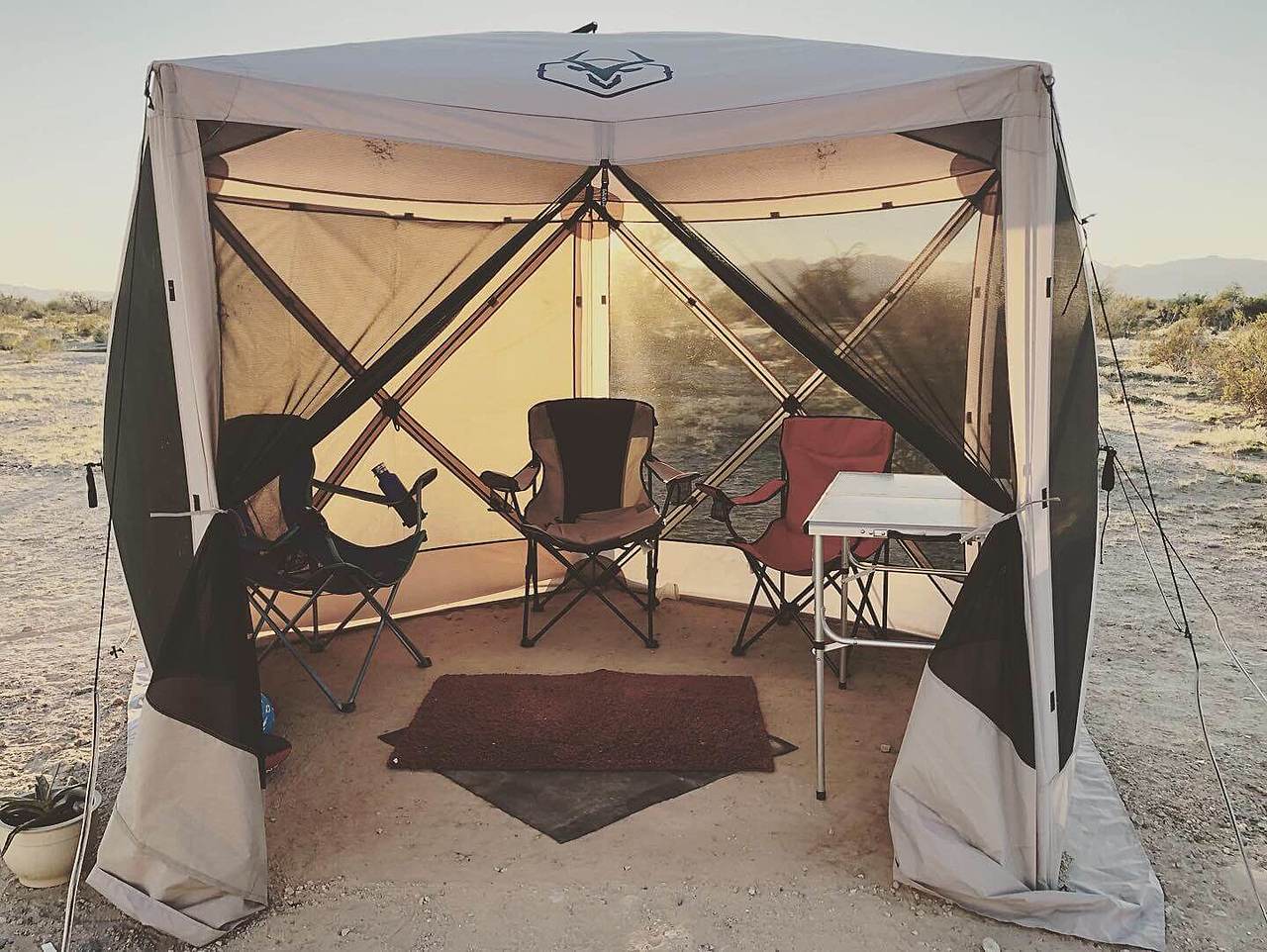Thoughts on Portable Gazeebos
May 25th 2020

We have a small RV, so we make the most of our space by extending it outside. There's lots of different products out there to make this happen, but we wanted to stay away from actual tents.
A couple of companies make these portable Gazeebos that pop-up in minutes, but as you'll find out, the features that make them similar are also their achilles heal.
The truth is, we demand a lot from our outdoor space. It has to remain dry on the inside, and it has to be able to be closed in completely so that we can run a heater in the Winter months. But above all, it has to be durable in the wind.
We boondock exclusively and are most often in the windy west! We've been through two of these shelters now, and wanted to share our experiences with them as we upgrade to the third.
Let's start with the most inexpensive option, the Gazelle.
Gazelle
The price point on this is appealing, and is the primary reason why we opted for this particular model.

It's perfect for sunny days with little wind. But any good amount of wind, or any rain, makes it uncomfortable to be in. This is due to the fact that there are no solid "walls" on this. There's a noseum mesh which works well at keeping the bugs out, but at the same time it stops a lot of the breeze from entering the shelter.
You can buy additional wind and rain panels for $59, but it only comes with three panels, when there are 5 sides to the gazeebo! To get around this, we spent $120 on six panels (then ended up with one extra one).
These panels have a hook at each corner, along with a few pieces of 2" velcro that holds it on. The panels hook onto each side. This was immediately a problem in multiple ways because the panels would become detached in a breeze. This allowed both wind and rain to enter the structure.
But more-so, the wind was a major issue with this. Despite being anchored down by 12" long, 1/4" steel ground stakes at each corner, and at 5 additional points for each guy line, along with 5 additional points for each side of the structure, the amount of bending and flexing this would do made us cringe.
The same feature that allows them to pop-in and pop-out easily, is the same feature that collapses the structure in any moderate amount of wind.
We started to search for something that would at least keep the rain out, and maybe do a little better in the wind.
Clam
We immediately upgraded from the 10' Gazelle, to the 12' Clam Quick-set. I like to refer to the Clam as the Apple of portable gazeebos. They are pricey, and for good reason. Overall I think it's worth the cost. This was a welcome upgrade because to start, the panels are integrated as part of the structure and zip up completely. They also have little windows which are a nice bonus. There's a rain flap that protects the zipper, so water (at least here) doesn't enter the structure.
The front also encloses nearly completely, making it a great fit for moderate Winters with its ability to warm easily.

However, it's design is the same as the Gazelle; any slight breeze pops-in the sides of the structure. And with the Clam, the top pops in as well! This didn't happen with the Gazelle, but the Clam is a lot larger so it catches a lot more of the wind than the Gazelle unit did.
Like the Gazelle, we also have this tacked to the ground with (6) 12" long, 1/4" wide steel ground stakes, along with (6) points at each top corner, plus (5) more points (one for each side).
The fact is, both units require upwards of (16) ground stakes to prevent the structures from collapsing in on themselves. And even then, the amount of bending and flexing this thing does in the wind doesn't make you feel good about the $450 that was spent on it.
Here's some video that we recorded of how this thing reacts in a 15mph steady wind.
Aside from the wind, the seams on the inside leak as well. And it's not just one spot, it's all the way around the inside of the top.

It just doesn't keep the rain out. And with the wind constantly an issue even with the Clam, we began to search for something even better.
Canvas
We stumbled across a few outdoor tents that were made of canvas. Although we wanted to stay away from a tent, these were too good to pass up.
There's one made by Kodiak Canvas, and after more research I guess it's a bit of a knock-off from the Springbar Highline.
From what I can gather they're very similar in their design. They have a thick canvas that's waterproof. For the structure, they feature 1" thick steel tubing, as opposed to the flimsy tent poles that both the Clam and Gazelle feature.
These structures are pricey, at about $700. But when you live in a small RV full-time, and you're using your outdoor structure every day in a variety of environments, it begins to make sense how we justify spending this kind of money on things.
As of writing, we've yet to upgrade because the model that we're after is out of stock! But as soon as we pick it up, we'll update this review with our findings.
Do you currently have a Kodiak Canvas or Springbar? Sound off in the comments below.
